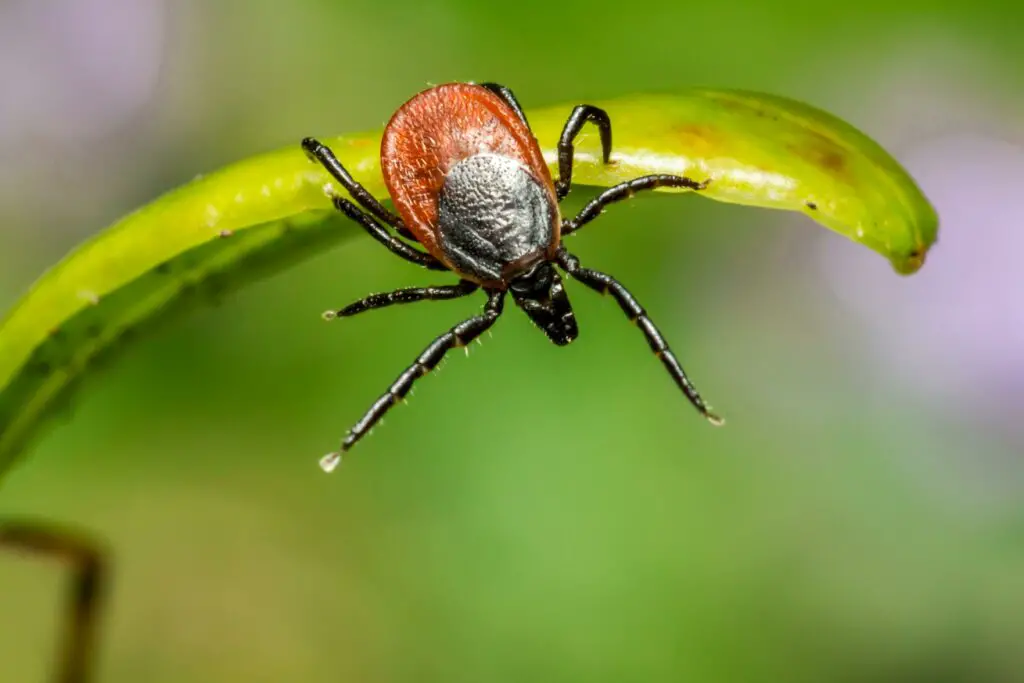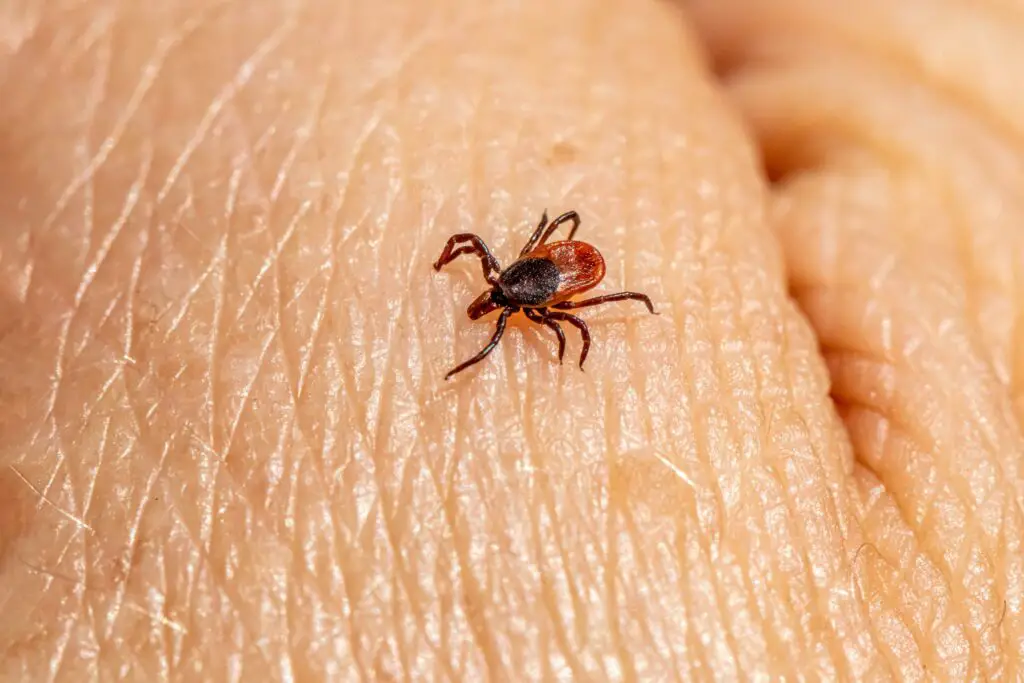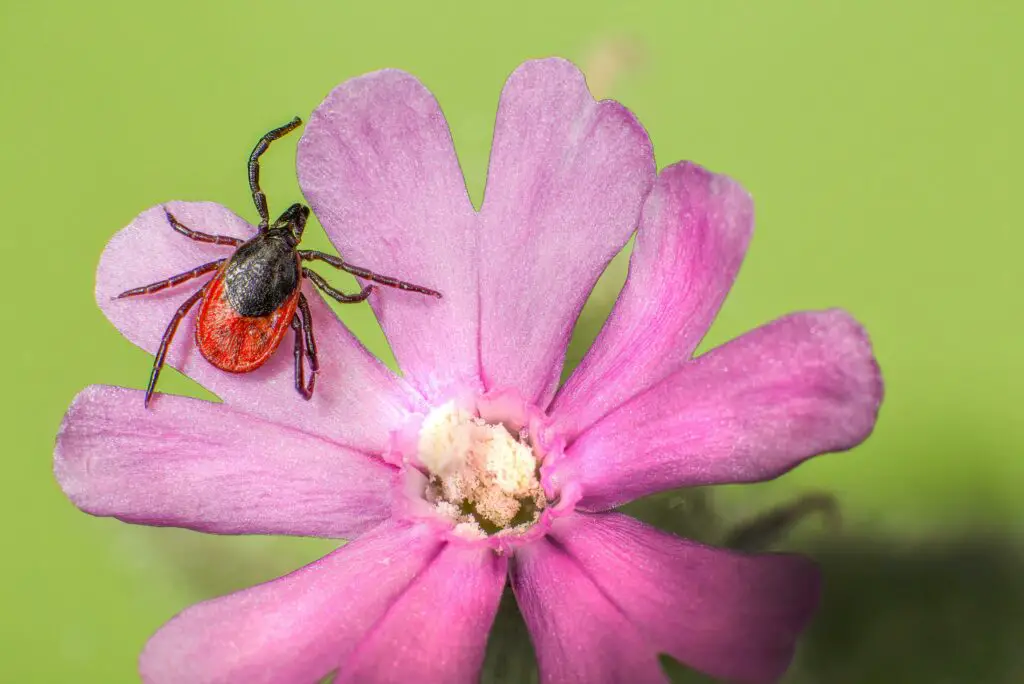Nature is the home to an incredibly versatile array of species, but ticks are definitely one of those that we tend to avoid at all costs.
These tiny arachnids, that are related to spiders, mites, and scorpions, are in fact parasites that survive by attaching themselves to larger animals and feeding on their blood. Humans aren’t spared either. Sadly, these insects carry harmful bacteria that can spread disease to people.
Sadly, tick-borne diseases are at an all-time high, with about 50,000 cases reported each year, and far more going unreported.

There are different types of ticks, and unfortunately, they sometimes find their way to people’s homes. The types most commonly found in homes are the black-legged tick, the dog tick, and the brown dog tick.
- Black-legged Ticks – known as deer ticks, these ticks are typically brown or black in color and have a flattened, oval-shaped body. They are commonly found in wooded areas and can transmit Lyme disease.
- Dog Ticks are larger and can range in color from brown to reddish-brown. They have a tough, shield-shaped body. Dog ticks can transmit diseases such as Rocky Mountain spotted fever.
- Brown Dog Ticks are brown in color and have a slender body.
Although the tick season is between March and October, or sometimes longer, we should be wary of this insects all year round. In fact,if beaten by a tick, a person can develop symptoms even after two or three months.

The bite itself isn’t painful and can cause swelling, itchiness, blistering, and bruising. The bad thing is that ticks also carry and transmit severe diseases, most commonly Lyme disease, as well as Rocky Mountain spotted fever, ehrlichiosis, and babesiosis.
Initially, Lyme disease develops as a circular red ‘bull’s eye’ rash around the site of a tick bite. However, not everyone gets a rash and you should also watch out for a flu-like illness with fever, headache, tiredness and general aches and pains.
The best way to prevent being bitten by a tick is to avoid tall grasses and areas where ticks thrive (such as moorlands and woodlands), especially during the warmer months.
In case you do get bitten, you should remove the tick as soon as possible in order to prevent infections.

These are some of the ways of safe removal.
- Use fine-tipped tweezers: Use clean, fine-tipped tweezers to grasp the tick as close to the skin as possible.
- Pull gently: Apply steady upward pressure, being careful not to squeeze or crush the tick. Aim to remove the tick in one smooth motion without twisting or jerking. Twisting or jerking can cause the tick’s head to break off and stay inside the skin, where it can still transmit disease.
- Clean the area: After removing the tick, clean the affected area with soap and water or an antiseptic solution. Monitor the site of the bite for any signs of infection or a rash, and consult a healthcare professional if necessary.

If by any chance ticks find their way into your home, take immediate action in order to prevent infestation. Most times, ticks are brought into your home in case they stick on your clothes or onto your pets.
- Isolate the area: If you have identified the presence of ticks in a specific area, keep pets and children away from that space.
- Wear protective gear: Put on gloves and a long-sleeved shirt to protect yourself from potential tick bites.
- Clean the area: Clean the area where you found the tick. If it is in bedding, wash the sheets. Inspect the area to ensure there are no more ticks that are present. Dispose of the tick by either flushing it down the toilet or sealing it in a container or ziplock bag before placing it in the trash.
Mom of rare twins with Down syndrome shuts down critics with photo showing how beautiful they are

While the chances of giving birth to twins increased 72 percent between 1980 and 2018, it’s still pretty rare. About 33 out of every 1,000 births are twins.
And what are the chances of identical twins? Approximately every three or four births out of every 1,000 are identical twins. So again, relatively rare.
When 23-year-old Savannah Combs found out she was pregnant with twins, she was thrilled. And then she learned another rarity, they both had Down syndrome.
Of course, it was emotional news. Savannah and her husband, Justin Ackerman, knew that some people would judge her and her babies because of their condition.
But to Savannah, that’s what makes them incredibly precious.
“It’s very rare what they have, but they’ve been my little gems,” she told News4JAX.

Savannah, who is from Middleburg, Florida, shared her post-pregnancy journey with her daughters Kennadi Rue and Mckenli Ackerman, on TikTok where they quickly gained a following.
In one of her videos, Savannah said she was told to abort her babies because they would not make it.
She decided to keep them and give them a fighting chance.
”Every [prenatal] appointment they were alive was a blessing to me,” Savannah explained.

When she learned they both had Down syndrome, her husband was away at boot camp.
Savannah was 29 weeks pregnant when she was admitted to the hospital, and delivered her daughters. The identical twin girls, Kennadi Rue and Mckenli Ackerman, were born on May 12, 2021.
The twins arrived two months before their due date, so they had to spend several weeks in the NICU before they came home.
They’re called mono di twins, meaning that they had their own sacs, but they shared the same placenta, meaning that they were going to be identical,” she said.
“Mo di twins as it is, it’s like very rare. And then you throw Down syndrome on top of it, it’s like one in 2 million.”

Despite their rare condition, Savannah said they are just like any other child.
“They have feelings. They have a beating heart. They know how to talk. They know how to do things you do. They will get there,” she said.
“Like I said, it may be a step behind but they’re going to do it. I’ve learned these kids are feisty little things and happy little things.”



Leave a Reply